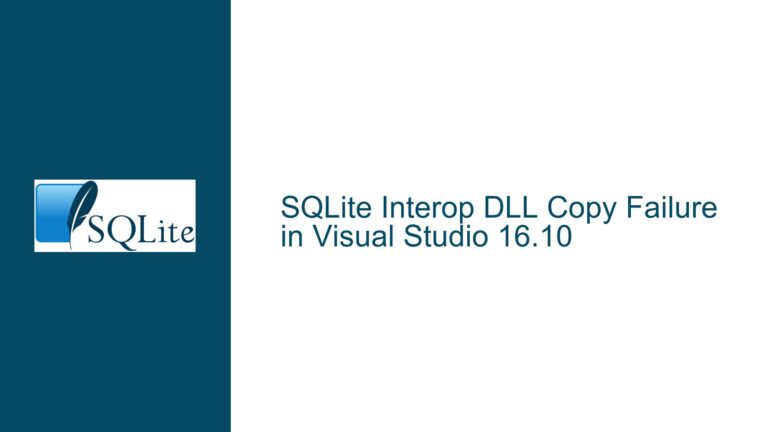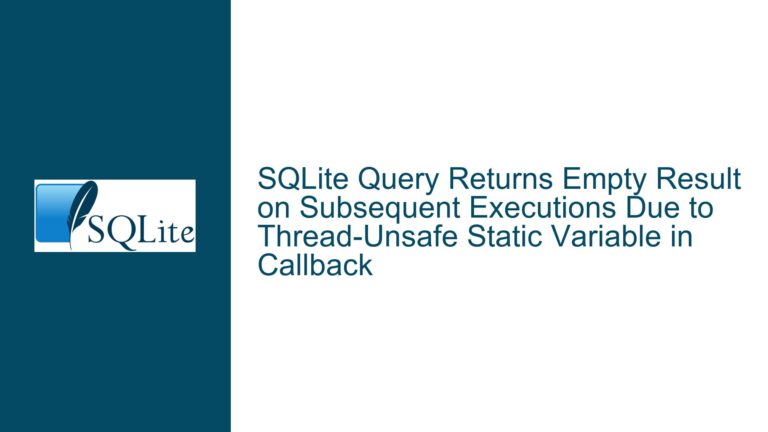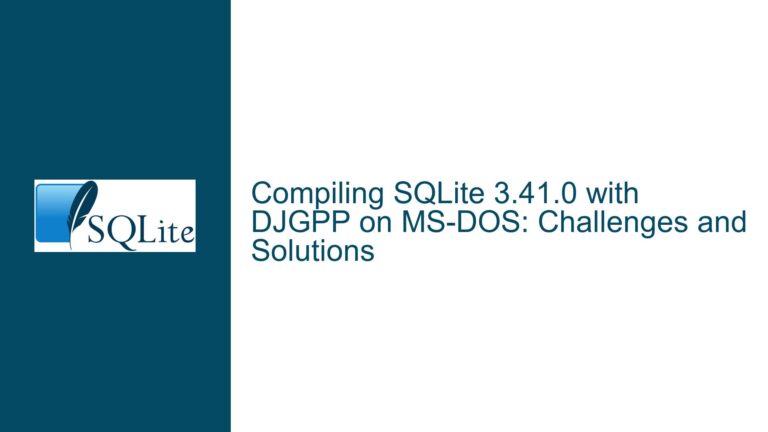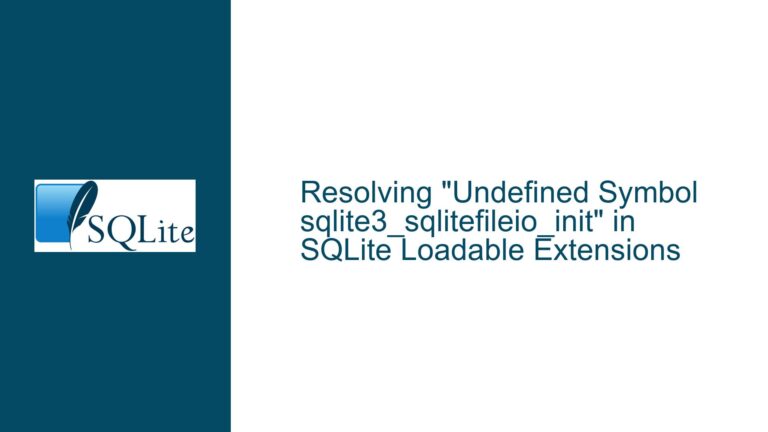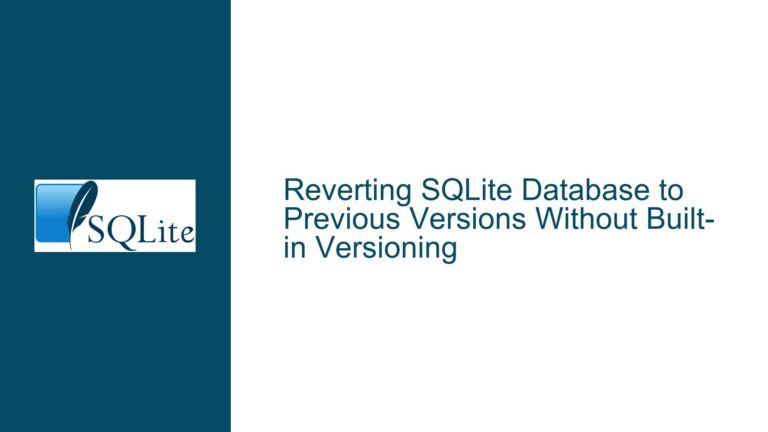SQLite’s Timescale: UTC, UT1, and Julian Day Calculations
SQLite’s Timescale: UTC-Based Timekeeping and Julian Day Calculations
SQLite, as a lightweight and widely-used database engine, employs a specific approach to handling time and date calculations. The core of this approach revolves around the use of UTC (Coordinated Universal Time) as its primary timescale, with Julian Day calculations serving as a foundational mechanism for date and time operations. This post delves into the intricacies of SQLite’s timescale, the implications of its UTC-based system, and the role of Julian Day calculations in its date and time functions. We will also explore the potential for future changes and how these considerations might impact data interchange formats.
SQLite’s Timescale: UTC as the Foundation
SQLite’s handling of time is fundamentally rooted in UTC, which is the primary timescale used by most modern computing systems. UTC is a high-precision timescale that is maintained by atomic clocks and is adjusted periodically to account for the Earth’s irregular rotation. These adjustments are made through the insertion of leap seconds, which ensure that UTC remains within 0.9 seconds of UT1 (Universal Time 1), a timescale based on the Earth’s rotation.
In SQLite, the datetime function and related date/time functions rely on the underlying system clock, which is typically synchronized to UTC via protocols like NTP (Network Time Protocol). When a query such as SELECT datetime('now'); is executed, SQLite retrieves the current time from the system clock, which is assumed to be in UTC. This assumption is crucial because it ensures consistency across different systems and environments, regardless of their local time zones.
The use of UTC in SQLite is further reinforced by the absence of any deltaT calculations in its source code. DeltaT represents the difference between Terrestrial Time (TT) and Universal Time (UT1), and its absence in SQLite’s implementation indicates that the database does not account for the subtle variations in Earth’s rotation that UT1 captures. Instead, SQLite treats time as a continuous, linear progression based on UTC, which simplifies its timekeeping logic but also means that it does not natively support UT1 or other astronomical timescales.
Julian Day Calculations in SQLite: A Closer Look
Julian Day (JD) is a continuous count of days since the beginning of the Julian Period, which started on January 1, 4713 BCE (Julian calendar). SQLite uses Julian Day calculations as an internal representation for date and time values, allowing for straightforward arithmetic operations on dates. The julianday function in SQLite returns the Julian Day number as a floating-point value, where the integer part represents the day count and the fractional part represents the time of day.
The core of SQLite’s Julian Day calculation can be found in the computeJD function within the date.c source file. This function converts a given date (year, month, day) into a Julian Day number using a well-known algorithm derived from Jean Meeus’s "Astronomical Algorithms." The algorithm accounts for the transition from the Julian calendar to the Gregorian calendar and ensures accurate date calculations across this boundary.
One notable aspect of SQLite’s Julian Day implementation is its reliance on the Gregorian calendar for dates after October 15, 1582, which is when the Gregorian calendar was adopted. For dates before this, the Julian calendar is used. This dual-calendar system is handled seamlessly within the computeJD function, ensuring that historical dates are represented accurately.
However, the use of Julian Day numbers in SQLite raises an important question: What timescale is being used for the fractional part of the Julian Day? Since SQLite’s timekeeping is based on UTC, the fractional part of the Julian Day also reflects UTC. This means that the time component of a Julian Day number in SQLite is effectively in UTC, not UT1 or any other timescale. This distinction is critical for applications that require precise timekeeping, as it affects how time intervals and timestamps are interpreted.
Implications for Data Interchange Formats and Future Considerations
The choice of timescale in SQLite has significant implications for data interchange formats, particularly in contexts where timekeeping precision is paramount. For example, the ongoing discussion in the IETF CBOR Working Group about the format of Time Tags highlights the importance of selecting a timescale that is both accurate and widely compatible. SQLite’s use of UTC and Julian Day numbers offers a robust and straightforward solution, but it also raises questions about how to handle leap seconds and other nuances of timekeeping.
One key consideration is the treatment of leap seconds. UTC incorporates leap seconds to maintain alignment with UT1, but SQLite does not explicitly account for these adjustments. This means that timestamps generated during a leap second event may not accurately reflect the true time. While this is unlikely to cause issues in most applications, it could be a concern for systems that require high-precision timekeeping.
Another consideration is the potential for future changes to SQLite’s timescale. While SQLite’s current implementation is based on UTC, there is always the possibility that future versions could introduce support for additional timescales, such as UT1 or TT. Such changes would require careful consideration of backward compatibility and the impact on existing applications. For now, however, SQLite’s reliance on UTC and Julian Day calculations provides a stable and predictable foundation for date and time operations.
In conclusion, SQLite’s timescale is firmly rooted in UTC, with Julian Day calculations serving as a key mechanism for date and time handling. This approach offers simplicity and consistency, making SQLite a reliable choice for a wide range of applications. However, developers should be aware of the limitations and implications of this timescale, particularly when working with data interchange formats or systems that require high-precision timekeeping. By understanding the nuances of SQLite’s timekeeping system, developers can make informed decisions and ensure that their applications handle time and date data accurately and effectively.

